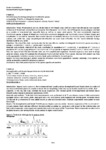Please use this identifier to cite or link to this item:
http://www.alice.cnptia.embrapa.br/alice/handle/doc/1032607Full metadata record
| DC Field | Value | Language |
|---|---|---|
| dc.contributor.author | LIÃO, L. | pt_BR |
| dc.contributor.author | VIEIRA, T. | pt_BR |
| dc.contributor.author | FARIA, J. | pt_BR |
| dc.date.accessioned | 2015-12-29T11:11:11Z | pt_BR |
| dc.date.available | 2015-12-29T11:11:11Z | pt_BR |
| dc.date.created | 2015-12-29 | pt_BR |
| dc.date.issued | 2015 | pt_BR |
| dc.identifier.citation | In: INTERNATIONAL PLANT PROTECTION CONGRESS, 18., 2015, Berlin. Abstracts. Berlin: IPPC, 2015. | pt_BR |
| dc.identifier.uri | http://www.alice.cnptia.embrapa.br/alice/handle/doc/1032607 | pt_BR |
| dc.description | Papaya (Carica papaya L.) from commercial seed usually produce hermaphroditic and female plants in a ration of 2:1. Males and females plants are usually removed. Flower morphology is the only way to identify visually the sex of the plant. Objective: In this way this study correlate the sexual expression with chemical profile of hermaphrodite and female leaves through nuclear magnetic resonance spectroscopy (NMR). | pt_BR |
| dc.language.iso | eng | eng |
| dc.rights | openAccess | eng |
| dc.title | Hermaphrodite and female Papaya Distinction by HR-MAS NMR. | pt_BR |
| dc.type | Resumo em anais e proceedings | pt_BR |
| dc.date.updated | 2015-12-29T11:11:11Z | pt_BR |
| dc.subject.thesagro | Mamão | pt_BR |
| dc.subject.thesagro | Hermafroditismo | pt_BR |
| dc.subject.thesagro | Carica papaya | pt_BR |
| dc.subject.thesagro | Semente | pt_BR |
| dc.subject.thesagro | Planta | pt_BR |
| dc.format.extent2 | p. 582-583. | pt_BR |
| riaa.ainfo.id | 1032607 | pt_BR |
| riaa.ainfo.lastupdate | 2015-12-29 | pt_BR |
| dc.contributor.institution | L. LIÃO, UFG; T. VIEIRA, UFG; JOSIAS CORREA DE FARIA, CNPAF. | pt_BR |
| Appears in Collections: | Resumo em anais de congresso (CNPAF)  | |










